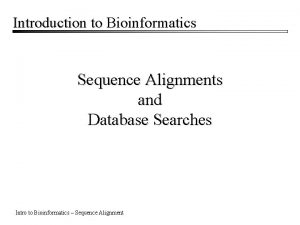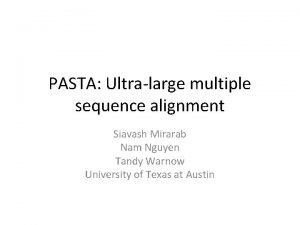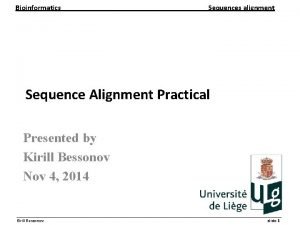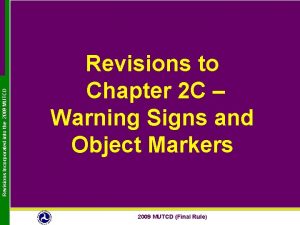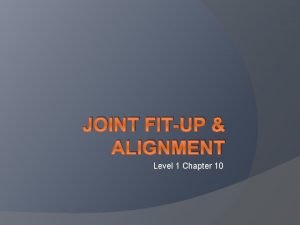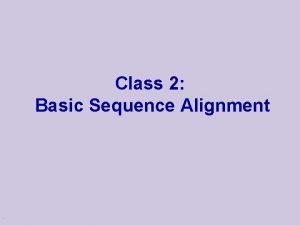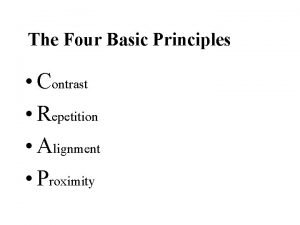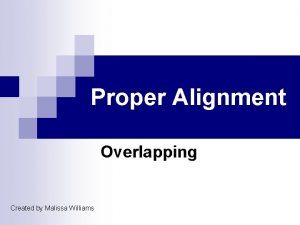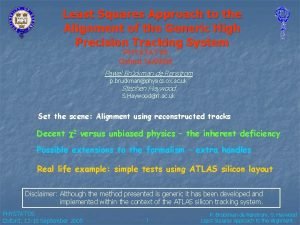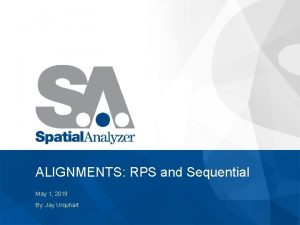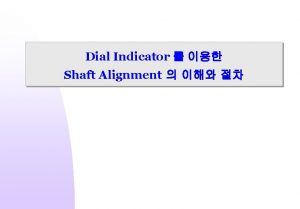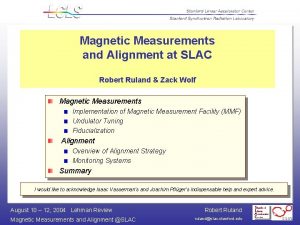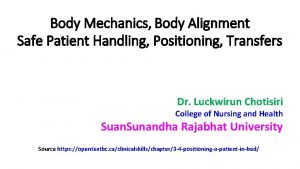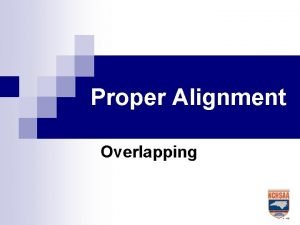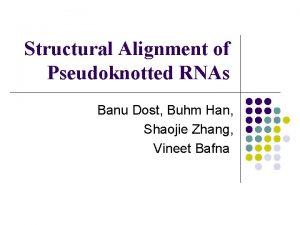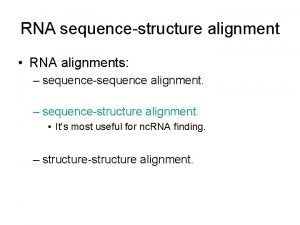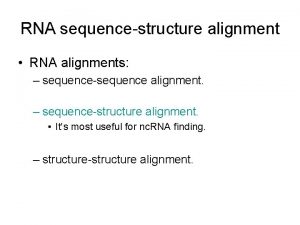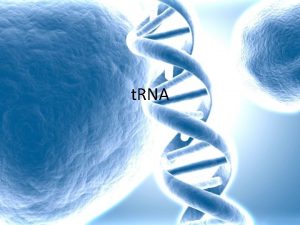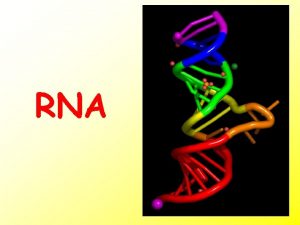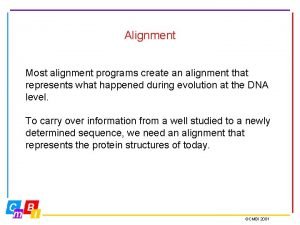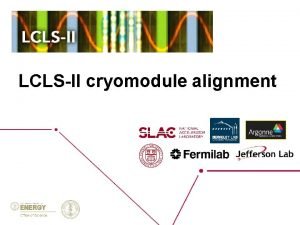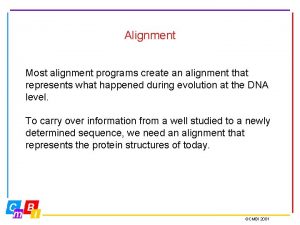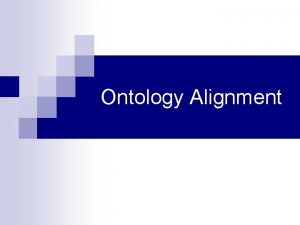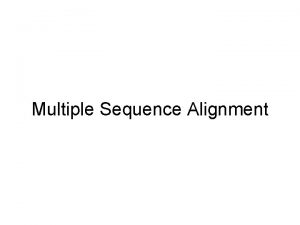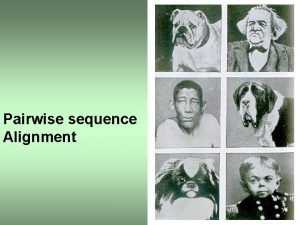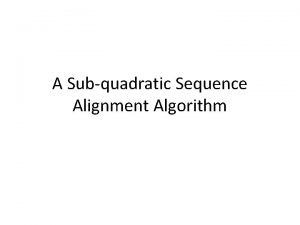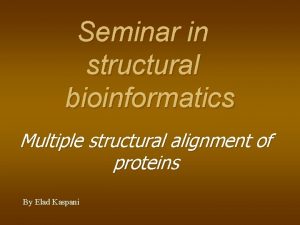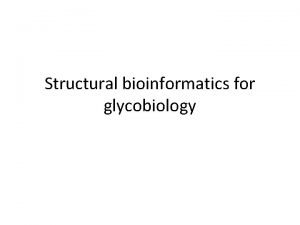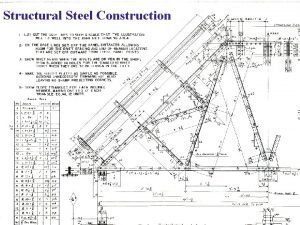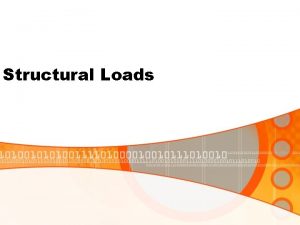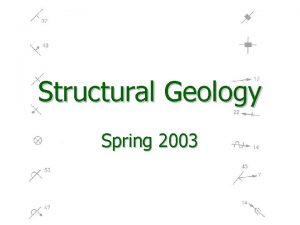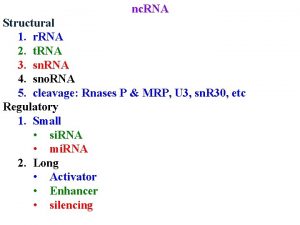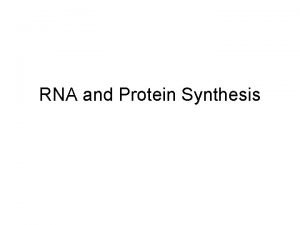Structural Alignment of Pseudoknotted RNA RNA pseudoknotted structures






![Naive approach B[i, j, k, i’, j’, k’]: Optimal score of the alignment of Naive approach B[i, j, k, i’, j’, k’]: Optimal score of the alignment of](https://slidetodoc.com/presentation_image/0034015fe89510616c2d8aec57c5226f/image-7.jpg)

























- Slides: 32

Structural Alignment of Pseudo-knotted RNA

RNA pseudo-knotted structures RNA alignment problem has been solved for RNAs with a regular structure, i. e. non-pseudo-knotted structures. Regular structure: All base pair are non-crossing. Pseudo-knotted structure: Some of the base pairs are crossing.

Solving problem for pseudo-knotted RNAs Dynamic programming technique used to align subsequences. Challenge: Aligning RNA with general pseudoknot sturctures is hard. (Jiang et. al JCB 2002). Formal definition of pseudo-knots such that n. To classify the pesudoknot strcutres so that most common pseudoknot is compuatable. n computation is not very expensive n biologically important

Definition: simple pseudo-knot • • • How can we define a pseudo-knot? There are many pseudo-knot definitions: Akutsu [journal 2002? ], Rivas&Eddy, …. For pediction. We start with Akutsu’s simple pseudo-knot formalism: All base pairs non-crossing and horizontal when rotated to form 2 loops.

Sub-structure for a simple pseudo-knot For DP algorithm, how to define sub-structure? • • • Regular structure: continuous subintervals as substructure of recursion. • • • Simple Pseudo-knot: can not use this substructure due to interweaving base pairs.

Sub-structure for a simple pseudo-knot sub-pseudoknot P(i, j, k) as the union of two subintervals P(i, j, k) = [i 0, i] U [j, k] frontier (i. j. k)
![Naive approach Bi j k i j k Optimal score of the alignment of Naive approach B[i, j, k, i’, j’, k’]: Optimal score of the alignment of](https://slidetodoc.com/presentation_image/0034015fe89510616c2d8aec57c5226f/image-7.jpg)
Naive approach B[i, j, k, i’, j’, k’]: Optimal score of the alignment of the sub-pseudoknot P’(i’, j’, k’) in target to sub-pseudoknot P(i, j, k) in query. Compute B[i, j, k, i’, j’, k’] ÞO(m 3 n 3) scores. (m: query, n: target) Instead of all triplets in the query, consider only the valid sub-pseudoknots that will represent the simple pseudo-knot. query target

Use a chain of sub-pseudoknots to represent simple pseudo-knot P(13, 14, 39) P(13, 14, 38) P(13, 14, 37) 13 12 9 P(13, 15, 35) 8 7 P(12, 15, 35) 6 P(11, 16, 35) 5 4 16 38 37 17 36 18 35 19 34 20 33 21 32 22 31 3 2 ……. . 1 39 15 11 10 P(13, 14, 36) P(10, 16, 35) 14 23 30 24 29 28 25 26 27

Why Chaining? • DP: use sub-optimal solution of the child substructure to compute optimal score at each step. P(13, 14, 39) P(13, 14, 38) P(13, 14, 37) P(13, 14, 36) P(13, 15, 35) • • • compute B[i, j, k, i’, j’, k’] => O(mn 3) scores (m: query, n: target) P(12, 15, 35) P(11, 16, 35) P(10, 16, 35) 13 12 11 10 9 8 7 6 5 4 3 2 1 14 39 15 16 17 18 19 20 21 22 23 24 25 26 38 37 36 35 34 33 32 31 30 29 28 27 ……. .

Alignment Algorithm Recursions: (i, j) is a base pair case MATCH: (i, j) and (i’, j’) are corresponding pairs query i i-1 • target j j+1 k i’ i’-1 B[i, j, k , i’, j’, k’] = max {MATCH, INSERT, DELETE} j’ j’+1 k’

Alignment Algorithm Recursions: (i, j) is a base pair case DELETION: i is deleted query i target j k i’ i-1 • B[i, j, k , i’, j’, k’] = max {MATCH, INSERT, DELETE} j’ k’

Alignment Algorithm Recursions: (i, j) is a base pair case DELETION: j is deleted query i target j k i’ j+1 • B[i, j, k , i’, j’, k’] = max {MATCH, INSERT, DELETE} j’ k’

Alignment Algorithm Recursions: (i, j) is a base pair case DELETION: i and j are deleted query i i-1 • target j k i’ j+1 B[i, j, k , i’, j’, k’] = max {MATCH, INSERT, DELETE} j’ k’

Alignment Algorithm Recursions: (i, j) is a base pair case INSERTION: i’ is inserted query i target j k i’ i’-1 • B[i, j, k , i’, j’, k’] = max {MATCH, INSERT, DELETE} j’ k’

Alignment Algorithm Recursions: (i, j) is a base pair case INSERTION: j’ is inserted query i target j k i’ j’ j’+1 • B[i, j, k , i’, j’, k’] = max {MATCH, INSERT, DELETE} k’

Alignment Algorithm Recursions: (i, j) is a base pair case INSERTION: k’ is inserted query i target j k i’ j’ k’ k’-1 • B[i, j, k , i’, j’, k’] = max {MATCH, INSERT, DELETE}

Simple Pseudo-knot in a Regular Structure: S in R Use a binary tree to represent RNA Solid circular nodes correspond to the actual base pairs. Empty circular nodes correspond to unpaired bases. Rectangular node correspond to sub-tree representing pseudo-knotted region

Simple pseudo-knot in a simple pseudo -knot: recursive simple pseudo-knot • S in S • R in S

Which structures can we handle? • • • Time complexity increases with the recursion depth of the pseudo-knotted region! R: regular structure S: simple pseudo-knot R: O(mn 3) S: O(mn 4) S in R: O(mn 4) R in S: O(mn 5) R in S in R: O(mn 5) = S in R: O(mn 5) R in S in R = O(mn 6). …….

Can we handle simple pseudo-knots with higher degree: standard pseudo-knots?

Can we handle simple pseudo-knots with higher degree: standard pseudoknots? • Yes! By revising the sub-pseudoknot structure and the recursion cases accordingly. query target

Can we handle recursive standard pseudoknots? Yes! Same reasoning with recursive simple pseudoknots.

What is left? What can we NOT handle? ? We can handle the class of pseudoknots defined by Akutsu which is the second largest class currently defined. We can additionally handle standard and recursive standard pseudoknots which are defined by us. A&U U {standard/recursive standard pseudoknots} R&E The largest class is defined by Rivas and Eddy. An example from this class we can not handle: We can handle this! (Standard pseudo-knot of degree 4) We can NOT handle this!

Implementation: PAL • C++ implementation of our algorithm. – input: • a query sequence with known structure (R/S/S in R) • a target sequence – output: • all high scoring local alignments in the target sequence

Testing • • Test Data: RFAM database, 6 RNA families with simple pseudo-knotted structures. (simple pseudo-knots in regular structure) • • • UPSK Antizyme Corona FSE Corona pk 3 Parecho CRE IFN gamma

Test 1: Structure Prediction • How good is PAL in inferring structure of the target sequence? – – – Pick 2 seed members of an RNA family as query and target. Align them. Compare the inferred structure of target with annotated structure in Rfam.

Test 1: Structure Prediction Results • TP, FN, Sensitivity, Specificity RNA Family Specificity (Mean) UPSK • • Sensitivity (Mean) 1 1 Antizyme 0. 99 Parecho 0. 95 0. 94 Corona FSE 0. 94 Corona pk 3 0. 97 IFN Gamma 0. 93 Specificity = TP/(TP+FP) Sensitivity = TP/(TP+FN) Both measure is ~0. 95 PAL is a strong predictor of structure

Test 2: Homologue Search • How well is PAL in finding the homologues of an RNA sequence? – – – Generate a random genome. Insert the members of an RNA family. Pick one of the members as a query. Search for the homologues of the query. Can we locate the members?

Test 2: Homologue Search Results

Novel Homolologues Search – Searched mouse, rat and gerbil genomes for homologues of – IFN-gamma RNA family.


Conclusion • PAL is a viable tool in finding novel homologues and inferring structure. • We hope PAL will help to understand explore the impact of pseudo-knotted RNAs in cellular function. •
 Sequence alignment
Sequence alignment Global alignment and local alignment
Global alignment and local alignment Compare two sequences
Compare two sequences Global vs local alignment
Global vs local alignment Difference between local and global alignment
Difference between local and global alignment Homologous structures and analogous structures
Homologous structures and analogous structures What is gap penalty in bioinformatics
What is gap penalty in bioinformatics Pasta alignment
Pasta alignment Global alignment in bioinformatics
Global alignment in bioinformatics Small change in road alignment sign
Small change in road alignment sign Joint fit up and alignment
Joint fit up and alignment Ballet posture alignment
Ballet posture alignment Difference between local and global alignment
Difference between local and global alignment Radar vs lidar
Radar vs lidar Contrast repetition alignment proximity
Contrast repetition alignment proximity A struggle with sin alignment
A struggle with sin alignment Image alignment
Image alignment Elps texas
Elps texas Contrast repetition alignment proximity
Contrast repetition alignment proximity Curriculum alignment example
Curriculum alignment example Celestial alignment
Celestial alignment Illegal alignment
Illegal alignment Alignment test
Alignment test Deep curriculum alignment
Deep curriculum alignment Rps reference point system
Rps reference point system Direction alignment commitment
Direction alignment commitment Alignment utah
Alignment utah Blast basic local alignment search tool
Blast basic local alignment search tool Reverse dial indicator alignment
Reverse dial indicator alignment Craddle alignment technique
Craddle alignment technique Dorsal recumbent position
Dorsal recumbent position Illegal alignment
Illegal alignment Wheel alignment angle
Wheel alignment angle






